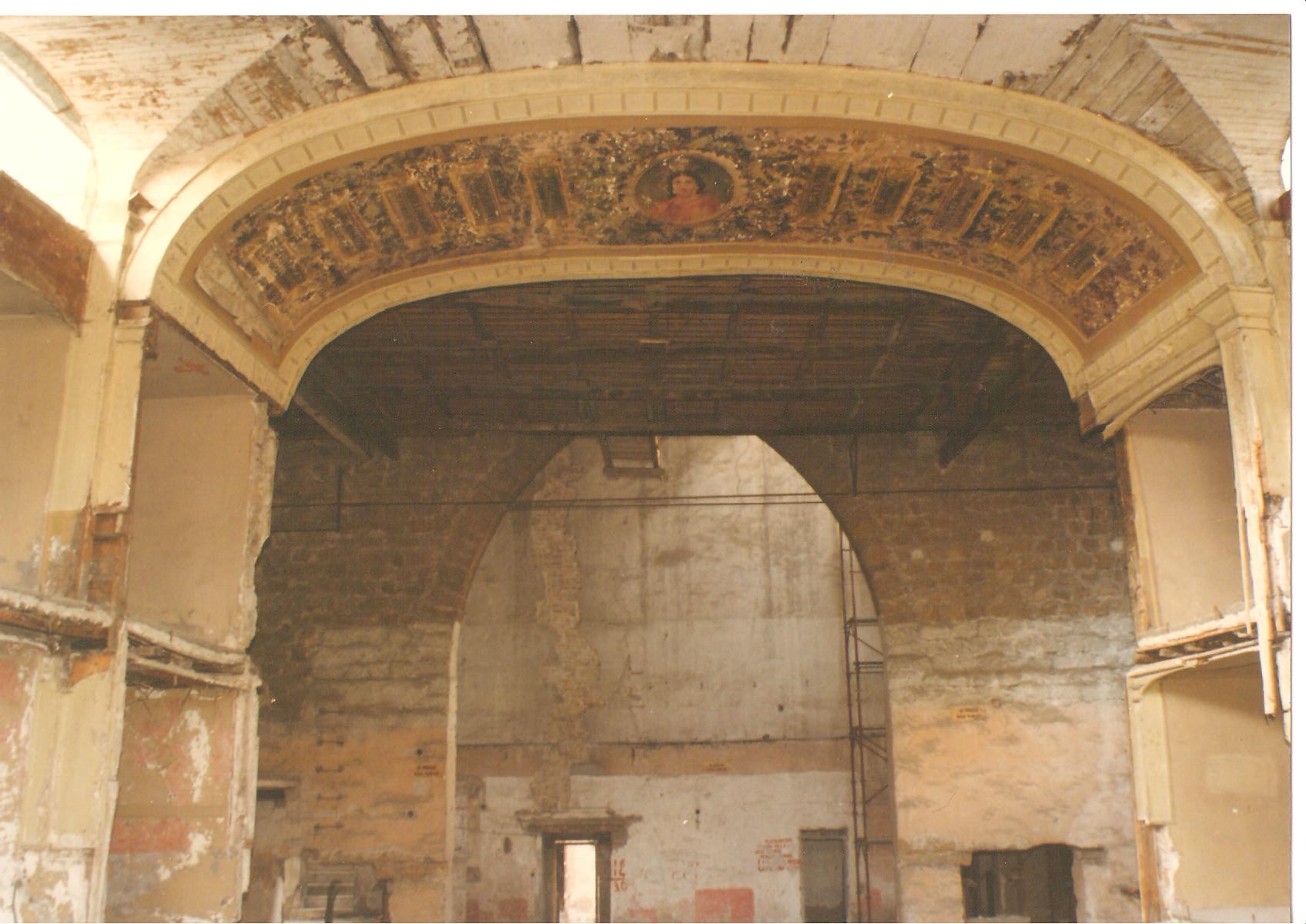
Read English version
APPROFONDIMENTI
Nel 1965 Angelo Musco figlio omonimo del famoso attore decise di restaurare il Teatro Garibaldi a proprie spese e di creare con lattrice Cinzia Abbenante una compagnia stabile di cui era regista. Ottima rappresentazione fu La Lupa di Verga. Ne seguirono due stagioni indimenticabili in cui Andrea Camilleri fece la regia della Favola del figlio cambiato con la compagnia di Edda Albertini e Vittorio Sanipoli che si unì a quella di Musco. In quel biennio indimenticabile si ricorda anche il Cabaret di Pino Caruso e Oreste Lionello, già protagonisti dei primi spettacoli del Bagaglino sorto nel 1965.
ENGLISH
GARIBALDI THEATER
The building stands where the garden of Palazzo Ajutamicristo was once located, in the Kalsa district. After the beginning of the 1800s, the area underwent building speculation and where there was the tree-lined avenue of the aforementioned garden, the musician Pietro Crutera built a theatre preserving the original pillars of the garden of Palazzo Ajutamicristo. The theatre was named after Garibaldi and inaugurated by the Hero of the Two Worlds in 1862. In that year Garibaldi gave the speech “O Roma o Morte” (Either Rome or Death) on the occasion of the opera “Rea Silvia” already performed in the Carolino Theatre, today the Bellini Theatre, by the master Crutera. The ceiling and the scenic arch were decorated with frescoes inspired by the epic heroic story of General Garibaldi. Michele Crutera inherited the theatre and sold it to the Carini family who already owned the Umberto I theatre in via Merlo. In 1906, after a long closure, the theatre was restored and the Carini family placed in it a plaque in memory of Garibaldi. After its first successes the theatre had negative periods following the two wars and in the second post-war period it became only an ill reputed cinema and an arena of boxing matches, called “Araldo”.
In 1968 the theatre was damaged by the earthquake. In 1970 it was acquired by the Regional Province of Palermo and in 1981 by the Municipality of Palermo. From 1996 to 2002 it was the stage of an important project with the artistic director Matteo Bavera and later the director Carlo Cecchi fell in love with this fascinating space. The Garibaldi theater has been engaged in recent years in productions and co-productions with names of great European importance, such as Carlo Cecchi, Emma Dante, Peter Brook, Antonio Latella, Davide Enia and Wim Wenders, who shot a scene for his film Palermo Shooting inside the theatre.
IN-DEPTH
In 1965 Angelo Musco, the homonymous son of the famous actor, decided to restore the Garibaldi Theater at his own expense and create a stable company of which he was the director. One excellent performance was La Lupa by Verga. Two unforgettable theatrical seasons followed in which Andrea Camilleri directed “La Favola del Figlio Cambiato” by Pirandello with the company of Edda Albertini and Vittorio Sanipoli, together with the company of Musco. In that unforgettable two-year period, it is worth remembering the Cabaret performed by Pino Caruso and Oreste Lionello, who were the protagonists of the first shows of the Bagaglino, which arose in 1965.
